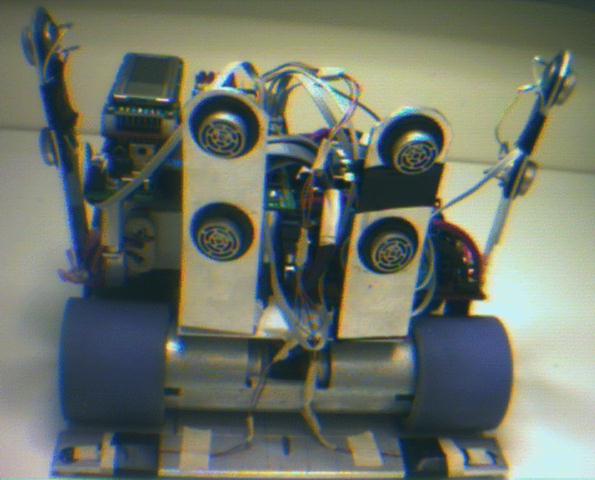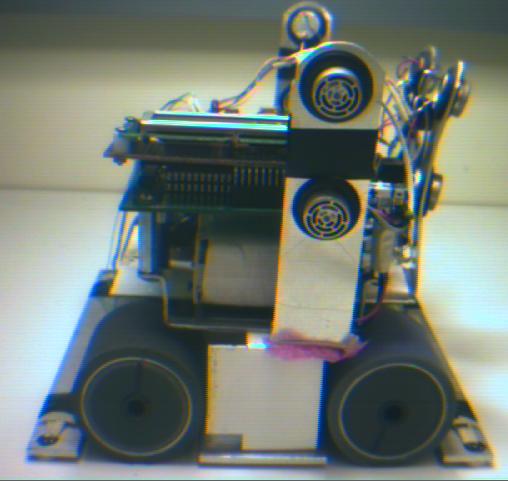Testing and Debugging
Mechanical
The assembly of the robot processed as expected with only a few minor problems. Once most of the components was assembled, there were very little space left for the front and rear contact switches(sensors). The robot also came out to be taller than expected, and the overall weight came in at 2.714kg.

Front View

Side View
Electronics
All of the electronic circuits were build and tested separately. The only item that proved to be a problem was the transducers. They worked very well by themselves but not when mounted onto the robot with the motors running. They seem to be picking up noise from the motors. This was very puzzling because great care was taken to isolate the sensitive electronic components from the noisy and high power motor controller.
After many hours of trying to trace the source of the problem, it was discovered electrical interference was not the culprit. The ultrasonic receivers was triggering on mechanical and acoustic interference. Apparently the vibration of the running motors was the source. Foam pads where used on the ultrasonic sensors' mounting points and the sensors was fitted into rubber grommets helped, but did not completely solve the problem.
Software
The most difficult aspect of multi-process programming was keeping track of the status of each process. The initial program ended up with more than one process trying to move the robot at the same time. It was quickly realized that global variables should be use to keep track of the status of each running process and the robot. Once this was done the course of programming the robot proceeded relatively smoothly.
Due to the small number of processes that needed to be track, it was decided that a process control routine was not needed. Although IC supports pointers, they were not used because IC does not support structures. Also note that IC does not support define statements, therefore global variables was used to define some common values.
Future Improvements
Given the time and budget constrains of this project, the outcome was very satisfactory. However there are always room for improvements. Here is some items that future project should consider:
- Higher capacity batteries for the motors, and CPU.
- A filter circuit for the Ultrasonic sensors to eliminate mechanical interference.
- A process control routine to determine which task should get started or terminated.
- If money is no object, a vision system should be used in place of the ultrasonic sensors.
Back to Dave's SUMO robot project page Back to Dave's home page
Dave Chu Concordia University Electrical and Computer Engineering 1455 De Maisonneuve O. H851 Montreal, Quebec, Canada H3G 1M8